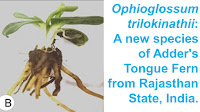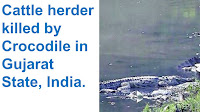Between 1 June and 15 August 2024, the Indian Ministry of Health and Family Welfare recorded 245 cases of suspected Chandipura Virus infection in Gujarat and Rajasthan states, with 45 districts affected and 82 known deaths, a case fatality rate of 33%, according to a press release issued by the World Health Organization on 23 August 2024. Sixty four of the cases have been confirmed as Chandipura Virus by either immunoglobulin M enzyme-linked immunosorbent assay or reverse transcription polymerase chain reaction, sixty one of these in Gujarat and three in Rajasthan. The number of new cases being reported has been declining since 19 July 2024.
Chandipura Virus, or Chandipura vesiculovirus, is endemic to western, central, and southern India, with sporadic outbreaks occurring across this region, typically during the monsoon season. In 2023 an outbreak of the Virus in Andhra Pradesh led to 183 deaths among 329 reported cases, a case fatality rate of 55.6%. Other recent outbreaks have led to case fatality rates of between 56 and 75%. In Gujarat there appears to be a spike in cases every four-to-five years.
Chandipura vesiculovirus is a negative-sense single-stranded RNA Virus in the family Rhabdoviridae. Like many Viruses in this family, it is a zoonotic disease which can be spread by a number of Arthropod vectors, including Sandflies, Mosquitoes, and Ticks, although its main vector appears to be the Sandfly, Phlebotomus papatasi. Notably, although Human infections with Chandipura vesiculovirus have been reported only from India, the Sandfly, Phlebotomus papatasi, has a much wider distribution, and the Virus has been extracted from Sandflies in Senegal, as well as a range of Mammals in Senegal, Nigeria, Bhutan, and Nepal, suggesting a much wider, undetected, range.
Chandipura Virus infection can lead to the development of a febrile disease, predominantly in children under 15, which can lead rapidly to convulsions, coma, and in the worst cases, death. In children, where fatality occurs, it typically happens within 48-72 hours of the first symptoms being detected.
The Indian Ministry of Health and Social Welfare has deployed specialist teams to Gujarat State to help implement control measures, including fumigating dwellings with insecticide to control the vectors of the disease and an education campaign aimed at raising awareness of the Virus, symptoms, and preventive measures.
See also...









%20(1)%20(1).png)